TABLE 15-5
What are the factors that determine the acceleration time (in sec.) from 0 to 60 miles per hour of a car? Data on the following variables for 171 different vehicle models were collected:
Accel Time: Acceleration time in sec.
Cargo Vol: Cargo volume in cu. ft.
HP: Horsepower
MPG: Miles per gallon
SUV: 1 if the vehicle model is an SUV with Coupe as the base when SUV and Sedan are both 0
Sedan: 1 if the vehicle model is a sedan with Coupe as the base when SUV and Sedan are both 0
The regression results using acceleration time as the dependent variable and the remaining variables as the independent variables are presented below.
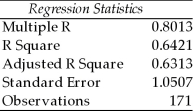 ANOVA
ANOVA

 The various residual plots are as shown below.
The various residual plots are as shown below.
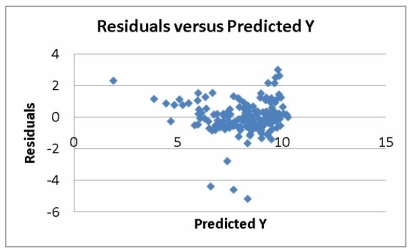
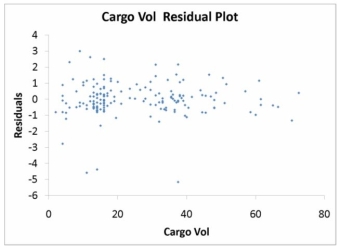
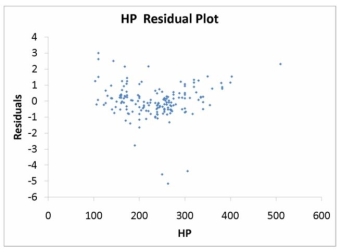
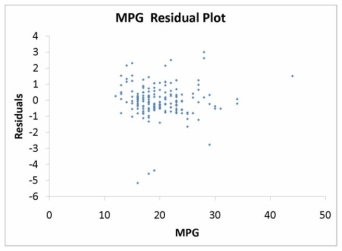
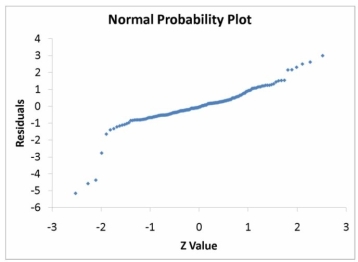 The coefficient of partial determination (
The coefficient of partial determination (  ) of each of the 5 predictors are, respectively, 0.0380, 0.4376, 0.0248, 0.0188, and 0.0312.
) of each of the 5 predictors are, respectively, 0.0380, 0.4376, 0.0248, 0.0188, and 0.0312.
The coefficient of multiple determination for the regression model using each of the 5 variables as the dependent variable and all other X variables as independent variables (  ) are, respectively, 0.7461, 0.5676, 0.6764, 0.8582, 0.6632.
) are, respectively, 0.7461, 0.5676, 0.6764, 0.8582, 0.6632.
-Referring to Table 15-5, there is enough evidence to conclude that HP makes a significant contribution to the regression model in the presence of the other independent variables at a 5% level of significance.
Definitions:
Contract-Law Issues
Disputes or concerns that arise in the creation, interpretation, or enforcement of agreements between parties.
Sovereign Immunity
A legal doctrine that exempts governments and their agencies from being sued without their consent.
Act Of State Doctrine
A principle that a nation's domestic actions are not to be questioned or challenged by the courts of another nation.
Principle Of Comity
A legal doctrine allowing courts within one jurisdiction to respect the laws and judicial decisions of another jurisdiction out of courtesy, rather than obligation.
Q6: The figure provided shows the absorption spectrum
Q16: The structure of double helical DNA<br>A) is
Q21: Which of the following is the best
Q34: A quality control engineer is in charge
Q39: Referring to Table 16-9, the forecast for
Q54: Referring to Table 12-7, the expected cell
Q68: Which of the following is a method
Q81: Referring to Table 17-4, suppose the supervisor
Q105: Referring to Table 17-7, an R chart
Q177: Referring to Table 14-4, what is the